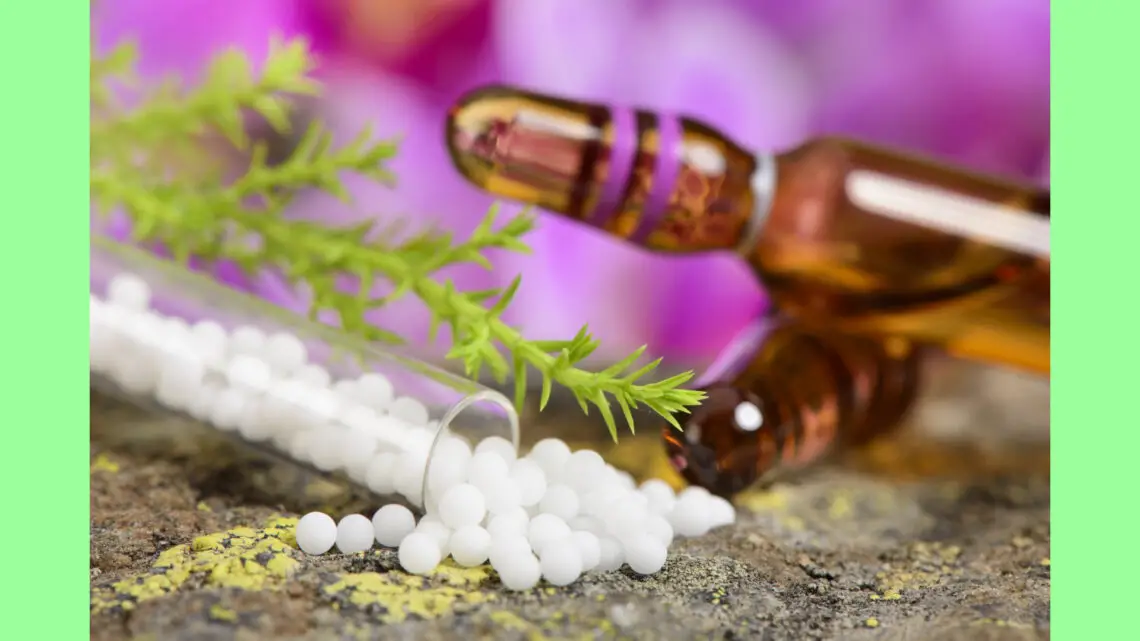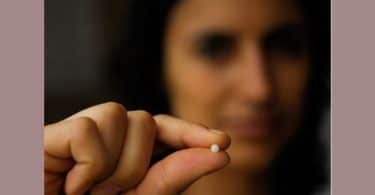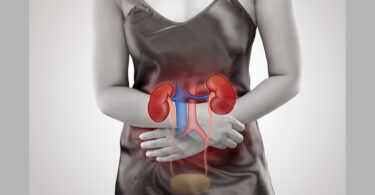How to Save and Preserve Classical Homeopathy in the Future
10 Simple Rules to Find the Appropriate Homeopathic Remedy
Filip DeGroote
Introduction:
The reason for writing these ‘rules’ is the crisis in the homeopathic world due to the lack of new homeopathic physicians. Homeopathy is chosen for study by fewer students than some decades ago. I believe the following reasons account for this:
First, there is the threat from outside, namely the pharmaceutical and the so-called scientific world which wants to eradicate homeopathy worldwide. Secondly, there is the threat from inside our homeopathic community, where there is still a silent competition going on between the different approaches and schools in classical homeopathy which creates a split, sometimes between homeopaths living in the same region. This disunity in classical homeopathy also created confusion in the minds of patients and therapists who showed some interest in homeopathy, not to mention the still always existing supplementary confusion created by the ‘false’ complex homeopathy. Consequently, especially for beginning therapists, this disunity without cohesion comes over as chaotic, which makes the matter too complex and inaccessible.
But, like any complex matter it can be mostly described in simple terms. During my 40-years practice I distilled the following ten simple rules.
Ten simple rules to make a good homeopathic prescription:
1.Throw aside all theories of belief and opinion, and dwell in simple fact! (James Tyler Kent, Lesser Writings)
Nowadays we are confronted with different homeopathic schools. Those schools are competing with each other and have a dividing effect on the homeopathic community. Although their theories are interesting to get acquainted with, some of them radiate a dogmatic approach which is in contrast with their real lack of efficiency in practice.
It has to be noticed that the different points of view are often very contradictory at first sight. Moreover, some of those approaches are quite difficult and nearly inaccessible to understand, so that if you look for similarities between them, you will not find them. This creates confusion and is, in my opinion, the main reason for the current crisis in homeopathy.
An example:
Different schools have competed for decades to be the exclusive one possessing the ‘true homeopathy’. There can only be ‘one’ simillimum. At a unifying homeopathy congress in September 2017 in Bruges, a case was proposed to be solved by the different schools and it led to finding a different remedy by each school. This proves that these various approaches fail and that a general starting point has to be sought again.
So theories may not become dogmatic!
2.In homeopathy we need to use an ‘as complete as possible’ repertory!
Homeopathy has become strong through the repertory. That’s why all valuable data, whether coming from the provings or from the clinic, have to be included in the existing repertories. The time is passed that symptoms originating from daily practice were labelled as unreliable. Nowadays this clinical information is widely accepted and used by leading homeopaths and gives us the opportunity to understand our remedies better.
3.When the second and following prescriptions have to be prescribed, look for new symptoms! NOTE: It is a misconception that a remedy can only be considered as the simillimum if that remedy has shown its curative action during one or two years.
4.Use only strange, peculiar and unusual symptoms § 153 – Organon Hahnemann. What is a peculiar symptom?
The leading symptoms of the case to be prescribed upon are those that are “strange, rare, or peculiar,” but what exactly is meant by that? In Barthel’s Characteristics of Homeopathic Materia Medica we find a brief summary of the twelve ways in which the “strange, rare, and peculiar” symptom may be understood. All these examples are from the remedy Phosphorus.
- The symptom is peculiar in itself: “long narrow stool.”
- The symptom is peculiar through the modality: “mania for work before menses.”
- The symptom is peculiar through its localization: “cold knees at night.”
- The symptom is peculiar through sensations: “anus feels open.”
- The symptom is peculiar through extension: “pain coccyx extending through spine to vertex, drawing head backward during stool.” (dgt)
- The symptom is peculiar through beginning, progression, and end: “pain increases and decreases with the sun.”
- The symptom is peculiar through contrary symptoms: “lack of vital heat, but heat aggravates.”
- The symptom is peculiar through its periodicity: “headaches every 7th day.”
- The symptom is peculiar through alternating symptoms: “delirium alternating with consciousness.” (dgt)
- The symptom is peculiar through sequences: “bloody vomiting following suppressed menses.”
- The symptom is peculiar through vicarious symptoms: “vicarious epistaxis.”
- The symptom is peculiar through the absence of expected symptom: “increased sexual desire without erections.”
5. Mental and general1 symptoms are the most indicative symptoms to be taken into account to find the most appropriate remedy for the patient (Organon- § 211; Kent Lecture XXXIII) This includes also mind-symptoms originating from the unconscious, as dreams2 and delusions.
6.So avoid as much as possible ‘objective clinical symptoms’ which represent the false ‘clinical homeopathy’! Keeping in mind that Hahnemann was the first to evaluate subjective symptoms as the most important ones! The combination of ‘new, peculiar and subjective’ symptoms can easily be found in dreams. That’s why my Dream Repertory is of such a great value. This repertory contains nearly two times more supplementary MIND information than the existing Synthesis ‘Mind + Dreams’ chapters together. Dreams, which are not specifically related to the daily reality and consequently have their origin in the creative unconscious of the patient, are normally very useful, even when dreamed only once! See: Radar Opus: Dream Repertory – Degroote; Dreams from homeopathic perspective – Degroote.
7.Which mental features can be selected as valuable symptom?
All the so-called personal mental features, related to education, culture and habits, have to be avoided (even during the first intake consultation). Only when some features are so exaggerated from the common point of view that they are clearly noticed, can they be retained! A mistake homeopaths frequently make is that they re-use some of those so-called personal treats again and again when searching for a new prescription. This happens especially when the first remedy appears of having failed to act but also when the previous remedy was successful. Homeopathic patients in our complex Western civilization need a more deep-acting mentally fitting homeopathic remedy than for example in India where clinical homeopathy in many cases gives splendid results.
8.The adagio, that the totality of the symptoms has to predominate when prescribing, must often be put aside, when we have the disposition of striking, singular, uncommon and peculiar symptoms. Prescribing on those symptoms cannot be always considered as key-note prescribing.
Argument:
– We know much too little about our small remedies to make a complete image of them, frequently because the provings were done on a very small number of participants or were not done in such a complete way as in the old days.
– Sometimes we see a confirmation in the presence of an allied remedy in an important retained symptom which doesn’t contain the simillimum. (see below)
9.Knowledge of the remedies which are similar to each other through the different kingdoms can give you a hint to find the ‘simillimum’.
See: Allied and Satellite remedies, Notes on Miasms and Remedy interactions, first edition – 1994 (dgt) – below a more enlarged version by the author (2019):
ALLIED AND SATELITTE REMEDIES:
Some remedies have a very close relationship, because:
– they have some components which are identical.
– they are a sort of combination of two existing remedies; this is especially found in some mineral-complex remedies.
– they are known in the clinic as being very similar.
So, we can identify some groups of remedies: e.g. :
Ammonium group (NH4+): (all ammoniums), (chitin (C8H13O5N)n which is present in the exoskeleton of crustaceae, spiders and insects, and in the mollusca), Caust., Ichth., Merc-sol.
Antimonium group: Aethi-a., Ant-ac., Ant-ar., Ant-c., Ant-f, Ant-i., Ant-m., Ant-met., Ant-n., Ant-n-l., Ant-o., Ant-s-aur., Ant-s-r., Ant-t., Calc-st-s.
Argentum-like remedies: Cit-v.
Arsenicum group: Achy.(warm-blooded), Ail., (Ant-ar.), Ars., Ars-h., Ars-i., Ars-met., Aster-xyz., (Calc-ar.), (Lob.), Luid-ci., (Nat-a.), …
Calcarea carbonica group: (all calcareas), (Alum.), Bell., Blatta-o.vml3, (Cist.) (resembles calc. only physically), (Con.), Cor-r., (Graph.), Hep., Hyos., Lap-a., (Rhus-t.), (Rumx.), (Sep.), Stront-c., Tarax., Urt-u.
Calcarea phosphorica group: Calc-hp., Calc-p., Carb-an., Chin., Puls., Rumx.
Cuprum group:(asteraceae), Choc., (ferrums), Lev., (loganiaceae), (mollusca: e.g. limx.), (solanaceae), (snake remedies especially those made of the snake poison), (zincums)
Ferrum group: (all ferrums), (fabaceae), Alf., All-c., All-s., (Alum.), Anth., Arn., Bit-ga., Cham., (Chin.), (Chinin-s.), (Choc.), Chr-met.stj, Crot-c., Cupr.stj, Cyna., Graph., (Ham.), Hecla, Kali-bi.stj, Lact., Lev., Lycpr., Mang.stj, Mill., Nicc.stj, Orig-v., Puls., Rat., Ratt-norv-s.hrn, Rumx., Slag, Tarax., Thlas., Urt-u. , Vanad.stj, Viol-t., Zinc.stj
Ferrum phosphoricum group: Bar-c.tt, Carb-an.tt, Chin.tt, Ferr-gp., Ferr-p-h., Ferr-py., Mag-m.tt, Phos.tt, Plb.tt, Puls.tt, Rumx., Sec.tt, Zinc.tt
Fluor group: Am-f., Apat., Bar-f., Blatta-o., Bothri-sg., Calc-f., Ceras-ce., Crot-d-t., Dendr-ang., Ensis-d., Fl-ac., Hecla, Kali-f., Lap-a., Lamp-sl., Lycps-v., Mag-f., Mag-sil-f., Micru-ln., (Mosch.), Nat-f., Nat-sil-f., (Sabad.), Sep., Slag, Topa-au., …
Iodum group: (all iodides), (brown algae, a.o. Lamin-d.), Adel., Aq-mar., Fuc., Hed., Iodof., (Meny.), Spong., Spong-n-t., Teucr., Thyr.
Kalium group: (all kali’s and their components), (fungi: contain kali-p.), (all snake remedies: especially Crot-c.), (trees), Alum., Anthraco., (Aran-xyz.), (Buteo-j.), Carb-v., Caust., Elat. (which contains potassium), Haliae-lc., Lam., Lyc., Puls. (which flowers contain potassium sulphate), Sabin.(remedy is made from the young shoots which contain much potassium), Spig. (responsible people who look like Nat-m.vml), Stram. (which contains potassium), Tarax., Tul.
Lycopodium group: (Abrot.), Chel., Lyc., (Senn.)
Magnesium group: (all magnesias and their components), Choc., (Gink-b.), Hecla, Phase-vg., Slag°, Urt-d., Urt-u., (Viol-o.), (Viol-t.)
Magnesium phosphoricum group: Bell., Coloc., Gels.
Manganese group: (ericaceae), (fabaceae), Slag
Mercury group: Aethi-a., Aethi-m., Cinnb., (all mercuries), Merl., Phyt., Podo.
Natrum muriaticum group: (all lac remedies), Am-m., (Apis), Aq-mar., Borx., (Bry.), Cisplat., Crot-ax., Crot-d-t. (extravert and social), Hall, Kiss., Lac-d.c1 (and all lac remedies), MAG-M., (Medus.), Methyl.vjp (= love of money, breaks off with family), (all natriums), (Sarr.), Sil-mar., Spig.vml
Nitricum (NO3-) / Nitrogen group: (all nitrogen remedies, including: ammoniums), Aml-s., Beta-co., Calc-pic., Cisplat., (Crot-ad.), Esin., Glon., Gunp., Merc-sol., Nicot., Pic-ac., Prot., Pulm-hist., Scat., Trinit. …), (asteraceae), (chenopodiaceae: Beta, Beta-co.), (cruciferae), (fabaceae), (insecta)
Nux vomica group: (Carb-v.), Cupr., Grat., Nux-v., (Sep.), Stry.
Oxalic acid group: (araceae), (caryophyllales with especially chenopodiae and polygonaceae: a.o. Beta, Chen-al., Chen-g., Fago., Portu-o., Rheum., Rumx., Spin-o.), Narc-ps., (oxalidaceae), Petros., Pip-n., Thea
Phosphor group: (fungi), (labiatae), Abies-n., (Acro-xyz.), Adeps-s., All-c., All-s., Blatta-o., Bol-e., (Calc-p.), Caras-au., Crot-d-t., Crot-h., (Cycl.), (Dendr-vir.), (Echinodermata), (Gels.), Lac-del., Lec., (Medus.), (Nat-p.), Ph-ac., Phos., Phos-ti., (Rumx.), Sabad., Scir., (Sphen-m.), Ther-n., Trach., Urt-d., Urt-u., (Viol-t.)
Platina group: Cisplat., Pall., Plat.
Pulsatilla group: Arist-cl. (aristocratic puls.dorcsi), Calc-m., Calc-p., Cycl., Ferr., (Graph.), Kali-i., Kali-s. (= an intense puls.) , (Naja), Puls., Sil., (Sulph.)
Rhus toxicodendron group: Form.bg (looks like apis but the modalities are of rhus-t.), (Calc.), Com., Med., Euph. (cancer with rhus-t. symptomscl), Ran-b., Ran-s., Rhod., Rhus-r., Rhus-t., Rhus-v.
Sepia group: (some carbons), Asper., Fl-ac., (Medus.), (Nat-m.), Nux-v., Sep., Sep-cal-bil., Sep-os., Sulph.
Silica group: Alf., Alum-sil., Amethyst, Bamb-a., Bamb-vg., Calc-sil., Castor-eq., Equis-h., Flint, Get., Hecla, Lysim., Nat-sil-f., Puls., (Rumx.), Sanic., Sil., Sil-mar., Sphing., Urt-d., Urt-u.
Snake remedies, remedies allied to the: Abel., Cimic. (= cold lachesis), Cupr., Lac-c., Rauw., Zinc.
Sulphur group: (iridaceae), (liliaceae), Acon., Aethi-a., Aethi-m., All-c., Ant-c., Arn., Atro-s., Bov.Teste (recognition), Cadm-s., Calc-s., Carbn-s., Chinin-s., Cinnb., Choc., Hep., Iris, Iris-foe., Mag-s., Merc-s., Mytil., Nat-s., Psor., Rumx., Sel.pd, Sep. (sep. contains 40% sulph.), Sul-ac., Sul-i., Sulph., Tegen-do., Tell., Tet., Vanil., Vip. (materialism), Vip-l-f.
Zincum group: (all zincums), (snake-remedies made of the snake poison), (Cuprum), (ferrums), Pin-pi., Tus-fa., (Viol-o.), (Viol-t.)
10.Aggravations after a ‘real’ simillimum are extremely rare and usually due to past events in the life of the patient (referring to bacteria and viruses) or in the life of the ancestors (referring to the miasmatic state of the patient).
These aggravations can be resolved almost immediately by administrating the unblocking homeopathic isopathic (bacterial or viral) agent or the appropriate classical or bowel nosode, followed in general again by the administration of the already known simillimum.
REMARKS:
OPTIONAL:
– A simillimum generally acts deeper and faster if followed by the ancestral adjudgement. When the simillimum can be complemented by a classical remedy (usually Psorinum) or a bowel nosode, the effect of the given simillimum deepens.
– Precise confirmation of the appropriate remedy can be obtained by applying the Energetic Examination (dgt)
See: Energetic Examination – Radar Opus: Physical Examination and Observation in Homeopathy (update-2014); Muscles, Nerves and Vertebrae Repertory; Degroote energetic remedy picture; and: Energetic examination: a course about the method.
FOOTNOTES:
1.Kent, J.T.; Lectures on Homeopathic Philosophy, Lecture XXXII & XXXIII: General means: all the things that are predicated of the patient (p.207) ; anything that the individual predicates of himself (p. 209).
2.: Kent, J.T.; Lectures on Homeopathic Philosophy, Lecture XXXII: ‘Dreams are so closely allied to the mental state that he (the patient) may well say, “I dreamed last night” that is a general state (p.208).






Yes. I found it very useful in my practice.
Hey Filip,
Such an informative post. The points mentioned above in the post are something to crack the deal.
I get lots of useful points and many important Notes.
This is a really neatly written article. I’ll be sure to bookmark it and come back to read more of your useful info.
Thanks for the post.?
Excellent presentation , wonderful guidance. Homeopathy field is like an ocean, very vast, very deep. to apply art of healing and treating practically through open book method will happen only when served with spiritual approach. knowledge of Homeopathy grows within through experience over many years of practice.. Dr. Filip Degroote is one such great practitioner indeed. Thanks a lot.
Excellent, excellent, excellent!!! I live in Nigeria and would like to know how to procure these wonderful books and energy device. My email is : [email protected] Keep it up, doc. Many thanks.
A very insightful post. Thank you for sharing your wisdom with the likes of us up and coming Homeopath’s. Much appreciated.
In phosphorus, stool could be big and hard enough to expand anus ring to pass it out. It doesn’t matter what ailment the patient is suffering from. It could be TB of intestines.